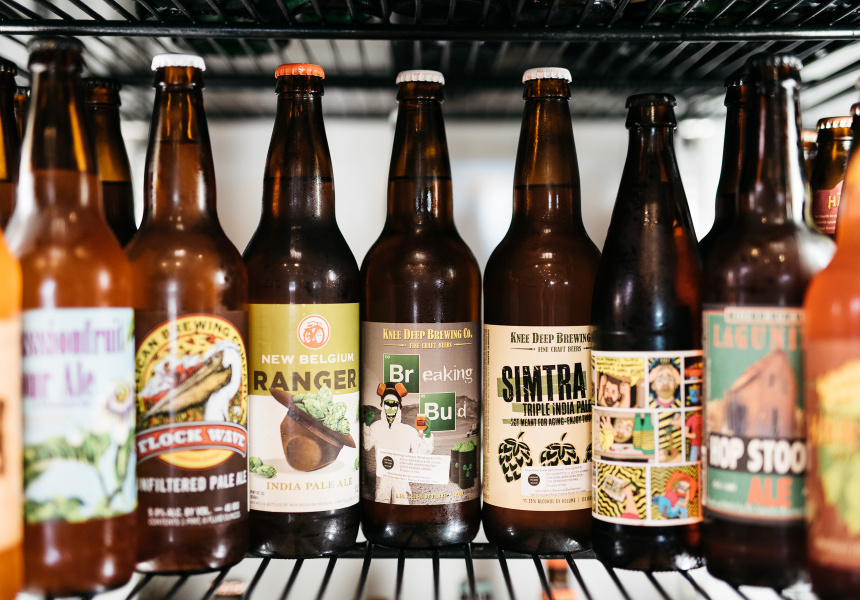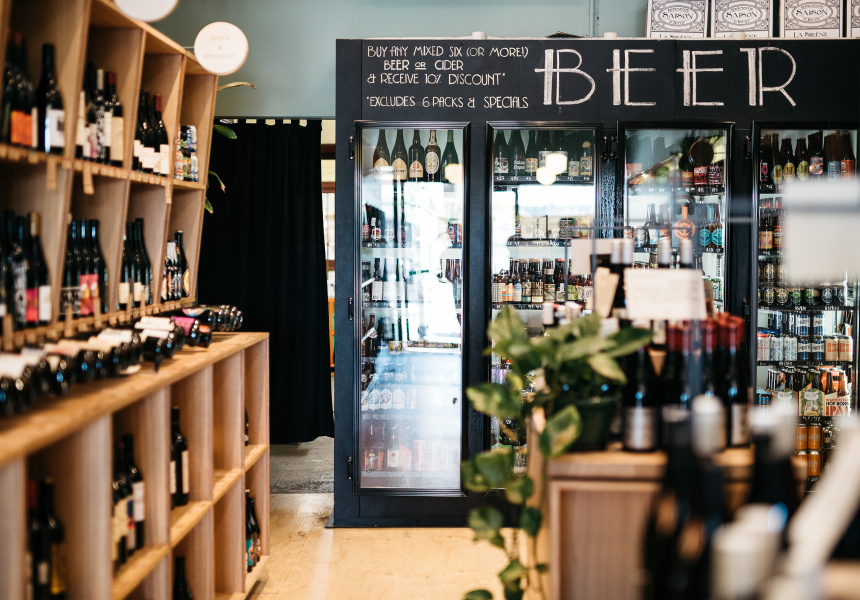If you love beer, you appreciate the taste and the effort that goes into creating it. There are roughly 150 microbreweries in Australia, pouring their hearts into around 300 styles of beer. But taste isn’t the only thing they want you to appreciate.
Spend a little time perusing your bottle-o’s selection of craft beer and you’ll quickly realise the packaging is as creative as the beer itself.
Craft-beer labels have spawned a special category of design nerd. Harvey Shepard is among them. He runs the blog Oh Beautiful Beer, which keeps tabs on craft beers that are making visually arresting packaging.
We think you might like Access. For $12 a month, join our membership program to stay in the know.
SIGN UPShepard, who admits to having bought beer for the packaging alone, says interesting design is craft beer’s way of setting itself apart from the “big beer” machine.
“They are countering mass-produced with a hand-crafted aesthetic, emphasising the hands-on approach of their much smaller operations,” he says. “The influx of smaller breweries is also a factor – designers are getting more freedom than ever.” Shepard cites art director Keith Shore, who was once given a brief to simply “draw something weird and cool”.
That “weirdness” has become part-and-parcel of craft-beer label design, where in the absence of a large marketing budget, craft breweries treat their packaging as a canvas for their brand story, sometimes literally printing that story on the bottle.
As relatively new ventures, craft breweries aren’t held back by traditional styles of design the way other alcohol products are. The design language of craft beer has come to embody intricate, hand-drawn and illustrative labels that suggest warmth and humanity, but it has also come to involve quirky icons that mirror a brewery’s even-quirkier name.
Take, for example, the Prahran brewed Kaiju beer. Its bottles feature brightly coloured cartoon monsters. Then there’s the “heritage”-style of craft-beer labeling on Sierra Nevada ales.
Some push the limits. Moo Brew, made on-site at MONA in Hobart, packages its beer in wine-like bottles that draw on MONA’s overarching themes of sex and death. New Zealand-based Garage Project has built a cult following for its ever-changing beer cans; each new beer release comes with a new design.
Shepard’s recent highlights include the black matte bottle and embossed Morse code on Longwood Brewery’s Stoutnik. “Some brewers are pushing the boundaries of packaging,” he says. “The Estonian brewery Viru is challenging accepted bottle shapes, BrewDog is packaging beer inside taxidermy animals, and Mikkeller released a series of heat-activated labels.”
Damian Kelly is a graphic designer who’s worked in beer- and wine-label design for 15 years. He says the diversity of flavours in craft beer, and the progressive design that comes with it, is slowly chipping away at the perception of beer equating to “bogan-ism”.
Craft beer only makes up 3.5 per cent of the Australian beer manufacturing industry, but is forecast to experience more than six per cent annual growth over the next five years.
“[Craft beer now] is like where boutique wine was at one point,” Kelly says. “It’s looking more and more sophisticated. It’s done a good job for the industry as a whole.”
Due to the huge variety of craft-beer labels, it can be hard to stand out on the shelf. How much do labels and packaging influence a shopper’s decision? Kelly talks about the squint test – “your average shopper might look for only 17 seconds if you’re lucky. To achieve shelf standout, you want to recognise something from afar really fast.”
Paul Ghaie (owner) and Eden Gilbert (beer manager) of beer-and-wine specialists, Blackhearts & Sparrows, say the story is a little more complicated.
“A lot of craft-beer customers are beer nerds and depend on apps when they choose beer,” says Gilbert. “You’ll see them standing there going through their app to suss out the best.”
“Beer customers are always looking for the next thing,” Ghaie says. “Regardless of the label, they will buy the newest thing. But I think the label does help to build a cult following. If there’s wacky labels, that helps people carry on supporting the brand.”
So what can we expect to see from craft-beer design in the future? Ghaie predicts more cans. Shepard predicts fewer illustrations of mountains, streams and grains, and more monkeys, monsters, robots and luchadores. With a selection of craft beer nearly as broad as wine, we’ll see all sorts of weird and wonderful designs on the shelf, and a range of odd characters staring back at us from the fridge.
This article is part of Broadsheet’s Craft Beer Quarterly, produced in partnership with James Squire.


